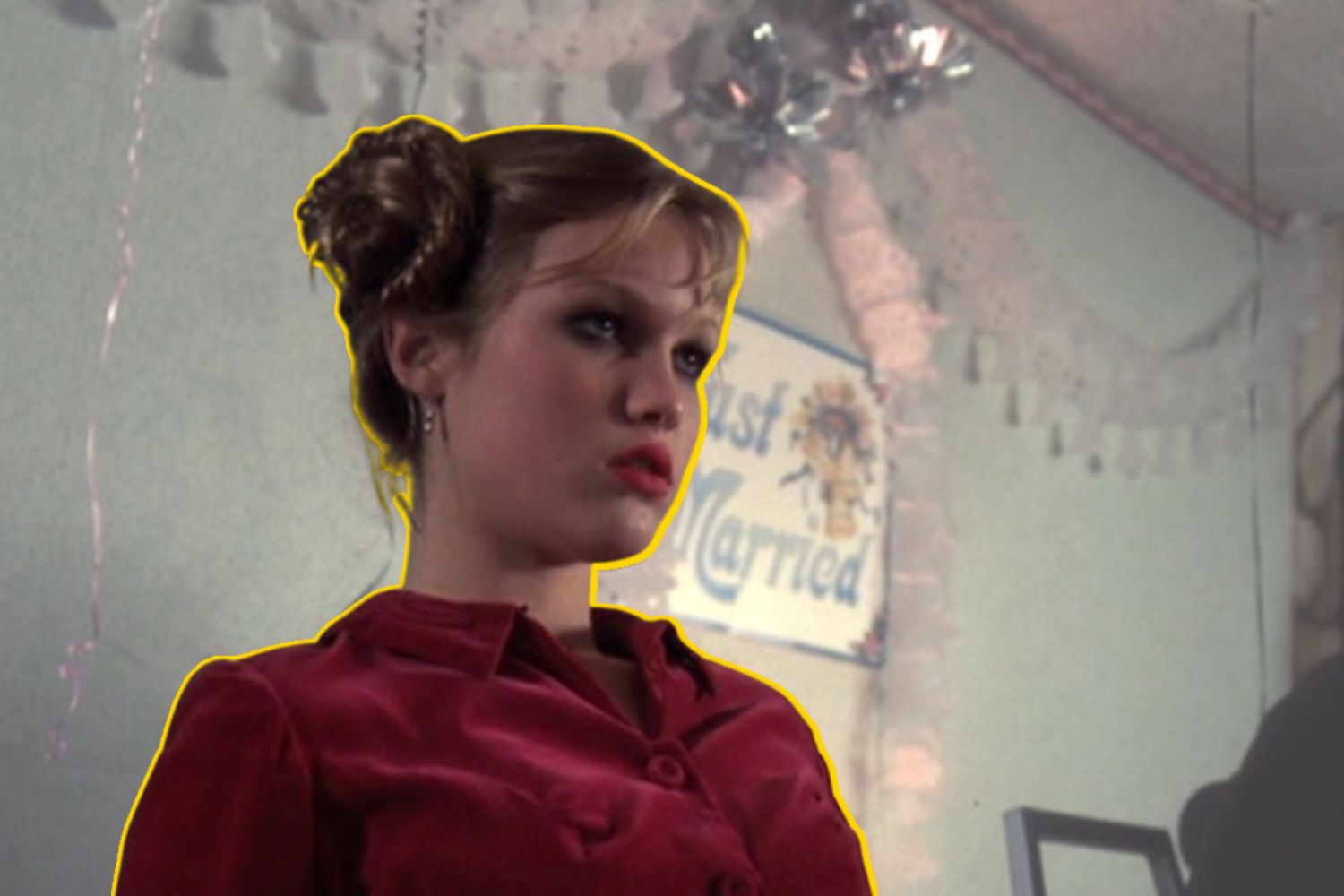Editorials
‘Lisa’ Is a Bizarre Intersection of ’80s Thrillers and ’90s Kids Movies
February 15th, 2023 | By Tori Potenza

Some movies feel like time capsules of a shared cultural history. Gary Sherman’s Lisa is a perfect example of this. The movie had a short theatrical release in 1989, but its wider exposure did not come until 1990, with direct-to-video programming opportunities on cable TV. It has the tone an erotic thriller while also fitting in with Lifetime dramas and 90s kids programming. Pepper in some of the 80s horror and slasher tones (likely due to Sherman’s work on Poltergeist III and Dead & Buried) and you get a tonally bizarre movie that could only be made at this time.
Video rental stores were booming in the 90s. Film producers recognized the benefit in producing low-budget movies that could skip theatrical releases. With the lower cost of productions they could invest a little and hike profits. This lined up with the popularity of erotic thrillers. These sexual, sleazy features could find a market and they didn’t need to pay Michael Douglas or Sharon Stone to star. So the producers of Lisa wanted to give it the same treatment. They pushed a DTV release which displeased Sherman, who believed his film deserved the big screen. Lisa ended up hitting a few hundred screens over one weekend, then immediately went straight-to-video. Unless someone caught one of those select screenings, the majority of audiences saw Lisa thanks to video rentals or premium cable channels.
Erotic thrillers owe a great deal to film noir, but in Lisa we do not have the gumshoe detective or the femme fatale. Instead there’s the spunky wannabe detective. Lisa (Staci Keanan) is a prototype of the kid detective trope that becomes popular just a few years later (Harriet the Spy, Nancy Drew, That Darn Cat). While Lisa is this pseudo kid detective, she doesn’t know she is solving a crime.
As a girl on the cusp of womanhood, her energy is spent fantasizing about men — from stuffing her bra to changing her voice, she attempts to act more womanly. Lisa’s fantasies become increasingly intense, to the point that she follows men, snags their license plate numbers, and calls the DMV in order to obtain their phone number (a skill she learned from watching detective shows). Eventually she becomes infatuated with the wrong man, a man who has been brutally murdering women in her town. This “case” finds her.
The erotic thriller was alive and well by the time Lisa was released, and the early 90s also saw a rise in erotic thrillers focused on young girls. The Crush, Poison Ivy, and Fear debuted just a few years after Lisa. What sets these movies apart from Lisa is the fact that they take on a much more adult tone, where Lisa mixes in the tones of a typical 90s kids movie and made-for-TV melodrama. This makes it unsurprising that Lisa made its way to both HBO and Lifetime — two channels with very different programming thought Lisa would fit in their catalog.
By the late 80s, Lifetime was beginning to hone in on the kind of programming it is known for today. In 1988, their head of programming geared the channel to focus on women’s issues. Soon after they began marketing to young women and housewives with their melodramatic films and television. So with some of the more violent scenes cut out, Lisa easily fit in with much of their other programs.
By playing down the violence, Lisa becomes a cautionary tale for young girls who are eager to become adults. Lisa is a precocious 14-year-old who takes after her mother Katherine (played by Cheryl Ladd, also the mother in Poison Ivy). The two are extremely close. Lisa often steals her mother’s clothes, makeup, and jewelry to appear older. They are often mistaken as sisters by the men that see them. Lisa learns a lot about being a woman from her mother. She uses this to her advantage; learning how to mimic her mom’s voice and sound like a sultry older woman.
While Lisa knows how to flirt, it’s clear she is clueless about sex. The flirtation and fantasy of phone conversations appeal to her. It’s not until a dramatic blow-up with her mother where she says, “Maybe if you got laid every once and awhile you wouldn’t be such a bitch”, that we even hear Lisa bring up sex in any way. Katherine dates, but she makes sure her daughter doesn’t know about the men in her life. This separation and lack of communication about dating ultimately puts Lisa in harm’s way.
Katherine is a single mom who runs her own business, so Lisa is often left alone. She treats her like an adult in almost every way, except when it comes to dating. Katherine does not discuss the dangers of being a woman, sex, or the realities of dating norms. She doesn’t even address Lisa’s overly friendly nature towards strangers, something that should be a red flag.
Lisa’s curiosity without guidance only heightens her interest. This lack of awareness she has in this area puts her into the path of Richard (D.W. Moffett), The Candlelight Killer. He is handsome, flirtatious, and treats her like a woman. So she stalks him, bringing her friend Wendy (Tanya Fenmore). When she raises concerns, Lisa simply responds “How can a guy that looks like that be a pervert?” She frequently calls Richard and he does whatever he can to meet her. This puts Lisa in a situation where she needs an adult stand-in — who better than her mom? Thus blurring the lines around what Lisa wants, a boyfriend or a father? Or is she too young to know the difference between the two?
Her obsession is more innocent than the women of Poison Ivy or The Crush, but their warped ideas about love, sex, and relationships align, often unaware of the realities of entering into adult relationships. By the end of the movie, Lisa has to confront that Richard is a killer, and one that has targeted her because of her actions. The lessons she has to learn have the feel of a Lifetime original film. Richard being loosely based on the serial killer Richard Ramirez adds to the true crime aspects popular on these channels.
Yet, this makes the movie even stranger.
The killer is made to be scary. Unlike Home Alone, where the bumbling criminals play down the terrifying nature of the situation, Lisa shows us a terrifying portrait of a killer. In between scenes of Lisa fighting with her mom or gossiping with her friend, we see Richard stalking his victims. When he finally shows up in Lisa’s home, it’s clear that Richard plans to treat her like his adult victims. He brings her into a candlelit room, we see a sexy teddy on the bed intended for her, and it alludes to his intentions of raping her. For all the childlike tones, Lisa is in a world full of adults and has no idea what she has gotten herself into.
Erotic thrillers do not typically have such an innocent protagonist. Even though it can play like a kid’s mystery, the movie does not shy away from its seedier and more violent content. A scene in which we watch Richard painstakingly pull a knife from his chest makes it clear that this movie does live in an adult world, even when its tone says otherwise. But like an afterschool special, the movie has a message for young girls eager to become adults. As smart and mature as Lisa may be, she lacks the worldly experience to make better decisions.
Lisa is a strange piece of media made at the perfect intersection of 80s and 90s trends. Not committing to a particular genre might do a disservice to the quality of the movie, but it’s also the reason it makes such a fascinating cultural artifact. Video stores are practically extinct and erotic thrillers have fallen out of fashion. Cable has been mostly replaced by streaming services and they don’t make kid detectives like they used to. Lisa gives us the nostalgia of a time and place that does not exist anymore.


